A 2-Minute Drill in Branding
PRESS PLAY>>TO VIEW THIS MONTH’S WELCOME VIDEO
A 2-MINUTE DRILL ON BRANDING
I’ve always been a big football fan. In high school, Friday nights were football game nights. Later, I became an avid Michigan and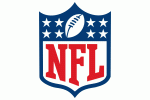 Michigan State fan (Wayne State was no football power). I became a Detroit Lions fan early on and can remember listening avidly to their last NFL Championship team in 1957. Later on, I was a charter season ticket holder for the Tampa Bay Buccaneers and went to every game for 13 seasons until I got tired of losing. Now…not so much. Like many others around the country I’m not addicted to NFL football or college football anymore.
Michigan State fan (Wayne State was no football power). I became a Detroit Lions fan early on and can remember listening avidly to their last NFL Championship team in 1957. Later on, I was a charter season ticket holder for the Tampa Bay Buccaneers and went to every game for 13 seasons until I got tired of losing. Now…not so much. Like many others around the country I’m not addicted to NFL football or college football anymore.
![]()
![]() What has happened to the NFL that makes millions lose interest. I think it’s a lack of effective branding. So far this year, television ratings for the NFL broadcasts are down 6.8% from last year, and 2016 was down 8% from the previous year. Many believe that this year’s sideline protests against our flag and country are the reason, and I agree that it is a contributing factor. If the media hadn’t been so infatuated with providing more coverage to the kneeling instead of the playing, I suspect it wouldn’t have been such a big deal, but I don’t think it would have helped the ratings or attendance. The fact is the NFL brand is boring and (like Major League Baseball and the NBA )the prospects for growth or a return to the glorious days of yesteryear is not likely.
What has happened to the NFL that makes millions lose interest. I think it’s a lack of effective branding. So far this year, television ratings for the NFL broadcasts are down 6.8% from last year, and 2016 was down 8% from the previous year. Many believe that this year’s sideline protests against our flag and country are the reason, and I agree that it is a contributing factor. If the media hadn’t been so infatuated with providing more coverage to the kneeling instead of the playing, I suspect it wouldn’t have been such a big deal, but I don’t think it would have helped the ratings or attendance. The fact is the NFL brand is boring and (like Major League Baseball and the NBA )the prospects for growth or a return to the glorious days of yesteryear is not likely.
So, what caused the decline in interest? Let’s start with over-exposure. As the league added more coverage to collect TV revenue with Thursday night games, Saturday games (near the season’s end), Monday night double headers, Sunday night games and early broadcasts from London, the fans are getting bored. The increase in free agency and career ending injuries have made the rosters so temporary that the loyalty of the fans to the players has all but disappeared. Gone are the days of the Steelers who won 4 super bowls with basically the same lineup on the field every year. Even today’s perennial champs, the New England Patriots, have done so with the only constants at QB and coach. Fans like to identify the players as people not just numbers or end zone celebrations. They want winners and they want to know them on a more personal basis. The dedication to Sunday game watching in the fall has diminished as players move more and touchdowns become less attractive.
And this lack of interest starts early. If you’ve been to a high school football game recently, you can see that about the only fans are family members and very few students who aren’t on the field. Away team fans don’t even bother to come unless it’s a state championship (or it’s one of those towns that have nothing but Friday night high school games to catch their interest). On the other hand, go to one of the soccer complexes on a Friday night and catch one of 6 or 7 games in progress with kids from age 3 to 13 and more than soccer moms in attendance). On a Saturday, the club soccer teams take over and again loyal fans make treks all over the state or metro area to catch the games.
Football has long benefited from the free coverage in the media and it continues to dominate the sports channel dialogues. However, the brand is suffering from increased head injuries, protests, contract hold-outs, drug suspensions, and spouse or child abuse by several players. All of which turn off the once rabid fans who made the NFL a cult brand for many years. I still watch the home team games on Sunday (or whenever they are on. However, I (like most former fans) haven’t been to a game at the stadium for several years now. It’s simply too much hassle for such a time investment (and money too). The key is for teams to identify more with their communities and to encourage kids to watch more games and play more touch or flag games in the neighborhood. I’m tired of hearing “It’s just a business”. It should be more of a sport that identifies with the home team and its loyal fans. Just like a successful brand, fans (customers) must have a positive relationship with the product or service. Football needs to recognize this soon.
HAPPY THANKSGIVING. It’s a great time to be thankful for many things—including great marketing. Publix food stores does it again 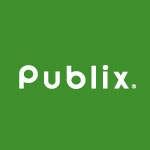 with an award winning spot on the importance of family at this time of year. Take a look: https://youtu.be/5ztNg7-fxR4
with an award winning spot on the importance of family at this time of year. Take a look: https://youtu.be/5ztNg7-fxR4

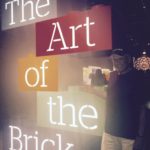 brought even more elaborate and intricate models. I am fascinated by the LEGO stores that I’ve visited here and abroad, and recently enjoyed visiting LEGOLAND near Orlando. I particularly was amazed at the creation of major US and Florida cities at the park which were completely made out of millions of LEGO bricks. So, it shouldn’t be a surprise that when a LEGO sculpture exhibit (The Art of the Brick) came to Tampa, we had to see what sculptor Nathan Sawaya could do to add magic to these simple bricks that have been the same since 1932.
brought even more elaborate and intricate models. I am fascinated by the LEGO stores that I’ve visited here and abroad, and recently enjoyed visiting LEGOLAND near Orlando. I particularly was amazed at the creation of major US and Florida cities at the park which were completely made out of millions of LEGO bricks. So, it shouldn’t be a surprise that when a LEGO sculpture exhibit (The Art of the Brick) came to Tampa, we had to see what sculptor Nathan Sawaya could do to add magic to these simple bricks that have been the same since 1932. themselves. His description of the exhibit describes his motivation very well: “This exhibition engages the child in all of us while at the same time highlighting sophisticated and complex concepts. Chances are you probably don’t have a slab of marble or a ceramic kiln at home. But I bet you have some LEGO bricks. You can say that again, Nathan. We find one or two quite frequently around our house and enjoy putting them together as much as the kids. I’ve also been fascinated by the LEGO brand for years and how it manages to endure and thrive from one generation to another. It has also grown to a $2.1 Billion brand that is now the world’s largest toymaker by revenue.
themselves. His description of the exhibit describes his motivation very well: “This exhibition engages the child in all of us while at the same time highlighting sophisticated and complex concepts. Chances are you probably don’t have a slab of marble or a ceramic kiln at home. But I bet you have some LEGO bricks. You can say that again, Nathan. We find one or two quite frequently around our house and enjoy putting them together as much as the kids. I’ve also been fascinated by the LEGO brand for years and how it manages to endure and thrive from one generation to another. It has also grown to a $2.1 Billion brand that is now the world’s largest toymaker by revenue. Founded in Denmark, the word is derived from the Danish words “lego godt” which means play well. I also can come from the Latin “lego” meaning “I put together” and marketers can certainly recognize that this brand plays well in the competitive retail market place and that they have put together a brand strategy that endures and continues to grow surpassing brands like Mattel as an all year/all ages brand.
Founded in Denmark, the word is derived from the Danish words “lego godt” which means play well. I also can come from the Latin “lego” meaning “I put together” and marketers can certainly recognize that this brand plays well in the competitive retail market place and that they have put together a brand strategy that endures and continues to grow surpassing brands like Mattel as an all year/all ages brand. Asian expansion will soon follow. To reach even more potential customers (and creative sculptors) the company has five LEGOLAND amusement parks in its home city of Billund, Denmark, Carlsbad, CA, Winter Haven, FL, Windsor, England, and Gunzburg, Germany, which are operated by Merlin Entertainment. We found the park to be fascinating and enjoyed staying at the LEGOLAND Resort Hotel which brings the brand alive not only in the rooms but throughout the property.
Asian expansion will soon follow. To reach even more potential customers (and creative sculptors) the company has five LEGOLAND amusement parks in its home city of Billund, Denmark, Carlsbad, CA, Winter Haven, FL, Windsor, England, and Gunzburg, Germany, which are operated by Merlin Entertainment. We found the park to be fascinating and enjoyed staying at the LEGOLAND Resort Hotel which brings the brand alive not only in the rooms but throughout the property.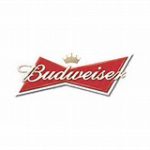 Budweiser—while being challenged by the craft brew craze, Bud keeps communicating in a way that pulls at the heartstrings or the funny bones while still emphasizing its King of Beers positioning. Check out their latest epic spot by clicking on
Budweiser—while being challenged by the craft brew craze, Bud keeps communicating in a way that pulls at the heartstrings or the funny bones while still emphasizing its King of Beers positioning. Check out their latest epic spot by clicking on 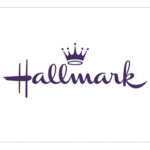 reputation for marketing that connects as well. Through its Hall of Fame movies, the Hallmark Channel and other specials, the company lives up to it “when you care enough to give the very best”. Check out one of their best spots by clicking on:
reputation for marketing that connects as well. Through its Hall of Fame movies, the Hallmark Channel and other specials, the company lives up to it “when you care enough to give the very best”. Check out one of their best spots by clicking on: 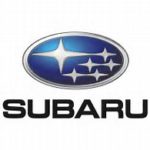 Subaru has differentiated itself from the other car companies recently with its love campaign. While most other carmakers are shouting about factory rebates, dealer incentives, and “name the brand”-a-thons, Subaru has identified the important events of our lives and how our car is a part of them. Love the family, love the car. Check it out at:
Subaru has differentiated itself from the other car companies recently with its love campaign. While most other carmakers are shouting about factory rebates, dealer incentives, and “name the brand”-a-thons, Subaru has identified the important events of our lives and how our car is a part of them. Love the family, love the car. Check it out at:  University of Phoenix has grown to one of the largest educational institutions in the country by not only giving access nationwide to its online programs and courses but also by understanding that many people in the workforce would like to improve their current status in life by gaining more education and a specialty. The marketing doesn’t just state that they have classes and graduates, rather it inspires its prospective students to use their brain and make life more meaningful in the process. The result is stimulating their brain by communicating with their heart.
University of Phoenix has grown to one of the largest educational institutions in the country by not only giving access nationwide to its online programs and courses but also by understanding that many people in the workforce would like to improve their current status in life by gaining more education and a specialty. The marketing doesn’t just state that they have classes and graduates, rather it inspires its prospective students to use their brain and make life more meaningful in the process. The result is stimulating their brain by communicating with their heart.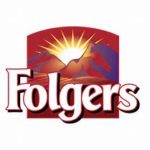 it’s successful, the time comes for a change of venue and management. My first marketing position was in brand management with P&G where I worked on the Folger’s coffee brand. Folger’s had the #1 share in all its markets at that time and I worked on some fo the plans to take the brand national within the next 5 years. The growth continued and Folger’s became the top grocery brand and sustained its growth even as new concepts like Starbucks or aggressive brands like Dunkin’ started to capture more of the coffee drinking market share. Eventually, as they have done many times, P&G spun off its coffee business (this time to Smuckers) and it continues to grow and maintain its position as one of the top promotional, traffic-building brands in the country. With all the change, however, Folger’s marketing has maintained its consistent, quality messages built on flavor and aroma (from those “mountain grown” beans) and is still one of the top brands in any category today. Its marketing has been refreshed many times, but it has stayed true to its loyal customer base by making it “the best part of waking up” again and again.
it’s successful, the time comes for a change of venue and management. My first marketing position was in brand management with P&G where I worked on the Folger’s coffee brand. Folger’s had the #1 share in all its markets at that time and I worked on some fo the plans to take the brand national within the next 5 years. The growth continued and Folger’s became the top grocery brand and sustained its growth even as new concepts like Starbucks or aggressive brands like Dunkin’ started to capture more of the coffee drinking market share. Eventually, as they have done many times, P&G spun off its coffee business (this time to Smuckers) and it continues to grow and maintain its position as one of the top promotional, traffic-building brands in the country. With all the change, however, Folger’s marketing has maintained its consistent, quality messages built on flavor and aroma (from those “mountain grown” beans) and is still one of the top brands in any category today. Its marketing has been refreshed many times, but it has stayed true to its loyal customer base by making it “the best part of waking up” again and again. Red Lobster is another brand that was actually the original brand for Darden Restaurants back in the late ‘60’s. Red Lobster was the original chain of moderate seafood restaurants and continues to grow with marketing featuring product shots that still whet my appetite whenever a TV spot airs. As the company grew with other brands like Olive Garden, Seasons 52, Longhorn Steaks, and Capital Grille. Darden decided that Red Lobster whose growth had stagnated would be spun off and eventually bought out by Golden Gate Capital. Now the brand has been refreshed with new management, a new store prototype modeled after New England fishing towns, updated menus, and a consistent marketing campaign that still features the food, yes the food, presented in mouth-watering spots and messages that have revitalized the chain and the brand.
Red Lobster is another brand that was actually the original brand for Darden Restaurants back in the late ‘60’s. Red Lobster was the original chain of moderate seafood restaurants and continues to grow with marketing featuring product shots that still whet my appetite whenever a TV spot airs. As the company grew with other brands like Olive Garden, Seasons 52, Longhorn Steaks, and Capital Grille. Darden decided that Red Lobster whose growth had stagnated would be spun off and eventually bought out by Golden Gate Capital. Now the brand has been refreshed with new management, a new store prototype modeled after New England fishing towns, updated menus, and a consistent marketing campaign that still features the food, yes the food, presented in mouth-watering spots and messages that have revitalized the chain and the brand. it was great to visit all the sights again and realize that not much has changed over the years and yet the city is as modern and state-of-the-art as ever. We enjoyed seeing the sights and were particularly impressed by two attractions that we hadn’t visited before—the Churchill World War II Museum and the London Eye.
it was great to visit all the sights again and realize that not much has changed over the years and yet the city is as modern and state-of-the-art as ever. We enjoyed seeing the sights and were particularly impressed by two attractions that we hadn’t visited before—the Churchill World War II Museum and the London Eye.
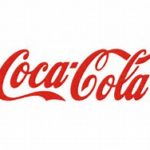 Speaking of Coke, I mention in my video from Westminster Abbey that we should have a lasting memorial to great brands that have made an impact on marketing as well as the world that we live in. These are the brands that have become a fabric of our lives (sounds familiar) and have consistently been recognized for their marketing and advertising excellence. Coca Cola is certainly high on that list with a brand that continues to grow and excel despite the competition from other soft drinks and beverages. Coke has done it by providing messages and images that withstand the test of time and continue to stir the imagination as well as the thirsts of legions of consumers in all demographics and lifestyles. The great spots are reinforced with sponsorships at the national, worldwide and local levels that keep Coke not only top of mind but also as favored members of our community.
Speaking of Coke, I mention in my video from Westminster Abbey that we should have a lasting memorial to great brands that have made an impact on marketing as well as the world that we live in. These are the brands that have become a fabric of our lives (sounds familiar) and have consistently been recognized for their marketing and advertising excellence. Coca Cola is certainly high on that list with a brand that continues to grow and excel despite the competition from other soft drinks and beverages. Coke has done it by providing messages and images that withstand the test of time and continue to stir the imagination as well as the thirsts of legions of consumers in all demographics and lifestyles. The great spots are reinforced with sponsorships at the national, worldwide and local levels that keep Coke not only top of mind but also as favored members of our community. 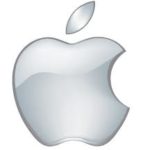 also by producing some of the most memorable marketing messages in all media. From the classic “1984” to competitive defense against Microsoft (I’m a PC, I’m a Mac campaign) to the outstanding imagery in promoting iphones, itunes, ipads, Apple manages to keep itself on the cutting edge and judging by the number of iphones that I observed on the tubes and busses of London, Scotland and Wales, there’s no stopping them now. They keep this brand alive in their retail stores, online, on mobile and everywhere in between. This brand is already a legend and only a couple decades old.
also by producing some of the most memorable marketing messages in all media. From the classic “1984” to competitive defense against Microsoft (I’m a PC, I’m a Mac campaign) to the outstanding imagery in promoting iphones, itunes, ipads, Apple manages to keep itself on the cutting edge and judging by the number of iphones that I observed on the tubes and busses of London, Scotland and Wales, there’s no stopping them now. They keep this brand alive in their retail stores, online, on mobile and everywhere in between. This brand is already a legend and only a couple decades old.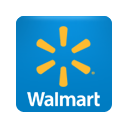 Walmart has grown to the largest business in the world and has an effect on the way the world does business in many ways (read “The WalMart Effect” by Charles Fishman) and it isn’t just by having everyday low prices. The company built a great brand strategy and then executes every day in every store with every customers. It’s marketing has been exceptional from the start by not relying solely on price/item print like most of its competitors, but rather by producing messages with real people, with great creative that makes the messages come through loud and clear. In the process, the company has built a brand that people trust and continue to shop no matter what their psychographics or demographics are.
Walmart has grown to the largest business in the world and has an effect on the way the world does business in many ways (read “The WalMart Effect” by Charles Fishman) and it isn’t just by having everyday low prices. The company built a great brand strategy and then executes every day in every store with every customers. It’s marketing has been exceptional from the start by not relying solely on price/item print like most of its competitors, but rather by producing messages with real people, with great creative that makes the messages come through loud and clear. In the process, the company has built a brand that people trust and continue to shop no matter what their psychographics or demographics are.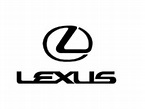 target customers. However, there are many other great cars in the category. So, how does Lexus outsell all of them in the category combined. By marketing themselves smartly, logically and creatively and making a logical case for their brand over the others. They continue to improve on the product while maintaining the high standards of quality, features, and customer service that have re-established the standard of excellence in the automotive category.
target customers. However, there are many other great cars in the category. So, how does Lexus outsell all of them in the category combined. By marketing themselves smartly, logically and creatively and making a logical case for their brand over the others. They continue to improve on the product while maintaining the high standards of quality, features, and customer service that have re-established the standard of excellence in the automotive category.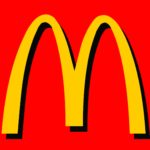 McDonalds is everywhere in Great Britain and despite the hundreds of other food chains and local pubs and eating establishments, they continue to grow. We passed by the golden arches in almost every town and hamlet we visited and they were always busy and while they haven’t replaced English fish& chips on my list of favorites, they certainly sell their share of Big Mac’s and fries along the way. Again, McDonalds continues to improve on their product with innovation in food, service and stores, but they excel by an ongoing brand message that stands out among all of the other fast food providers in the market. They know that McD’s is part of life not just in the states but world-wide and their messages resonate with the customers no matter what part of the world they reside.
McDonalds is everywhere in Great Britain and despite the hundreds of other food chains and local pubs and eating establishments, they continue to grow. We passed by the golden arches in almost every town and hamlet we visited and they were always busy and while they haven’t replaced English fish& chips on my list of favorites, they certainly sell their share of Big Mac’s and fries along the way. Again, McDonalds continues to improve on their product with innovation in food, service and stores, but they excel by an ongoing brand message that stands out among all of the other fast food providers in the market. They know that McD’s is part of life not just in the states but world-wide and their messages resonate with the customers no matter what part of the world they reside.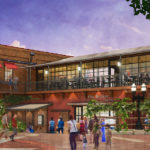
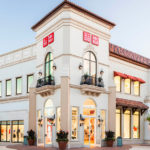
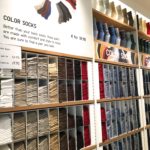
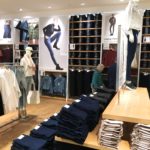 the company has moved toward larger stores in larger markets and has grown its sales to over $16 Billion (if my yen/dollar conversion is accurate). These are exciting numbers, but what’s really exciting is the in-store experience. UNIQLO’s theme for its Life Wear is “Simple Made Better” and the simplicity of the store is apparent the minute you walk in. With merchandise displays that make an immediate statement of volume and color that only exceeded by the neatness that is a constant. The training of employees on how to fold the clothes is legendary and is only superseded by customer service commitment that provides friendly faces who seem to be everywhere straightening and colorizing while helping anyone in sight.
the company has moved toward larger stores in larger markets and has grown its sales to over $16 Billion (if my yen/dollar conversion is accurate). These are exciting numbers, but what’s really exciting is the in-store experience. UNIQLO’s theme for its Life Wear is “Simple Made Better” and the simplicity of the store is apparent the minute you walk in. With merchandise displays that make an immediate statement of volume and color that only exceeded by the neatness that is a constant. The training of employees on how to fold the clothes is legendary and is only superseded by customer service commitment that provides friendly faces who seem to be everywhere straightening and colorizing while helping anyone in sight.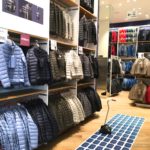
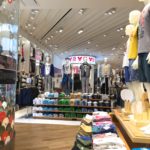
Recent Comments